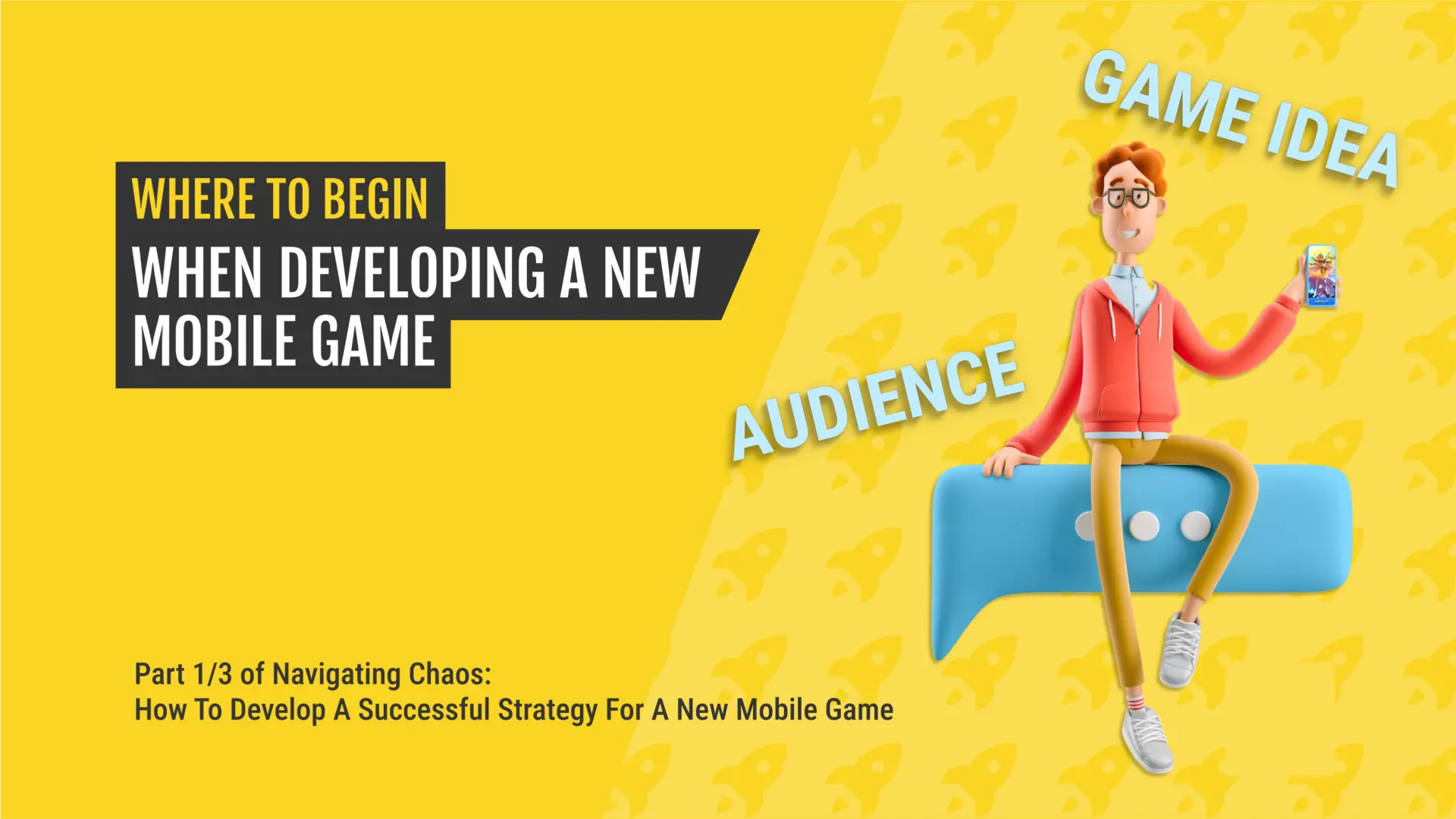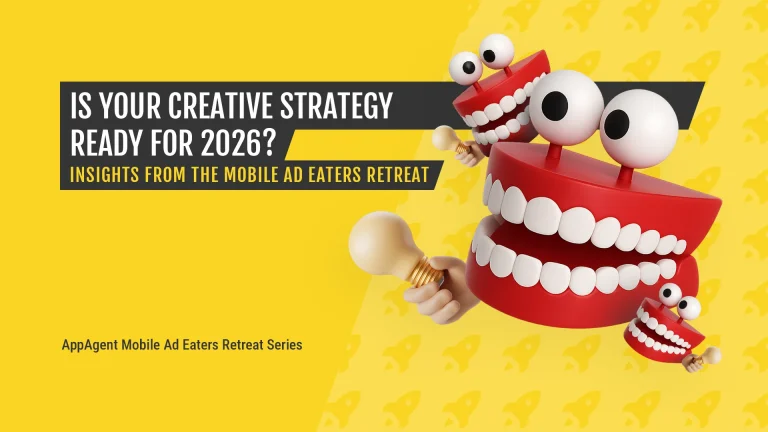Welcome to the Part One of the Navigating Chaos Series! Over the course of three articles, we’ll provide you with practical tips for developing a successful strategy for a mobile gaming studio, a new mobile game.
Subscribe to our newsletter to be notified when the next article is published!
The trigger for this article was a conversation at PG Connects London with the CMO and VP of Growth of a large gaming studio. We debated about where to start developing a new mobile game: do you begin with the idea or the audience?
What’s your take?
Idea vs. audience
To answer this question, I would consider three key aspects:
- The mobile game market is brutally saturated and is now a zero-sum game → You’re either stealing players from others, or others are stealing from you.
- IDFA deprecation has made marketing to specific audiences on iOS nearly impossible → Your game has to be appealing to the masses and capable of selling itself in five seconds or less.
- The stakes are high due to increased player expectations and the insane cost of acquisition → The game you build must be realistic in terms of resources, and you should maintain a competitive edge.
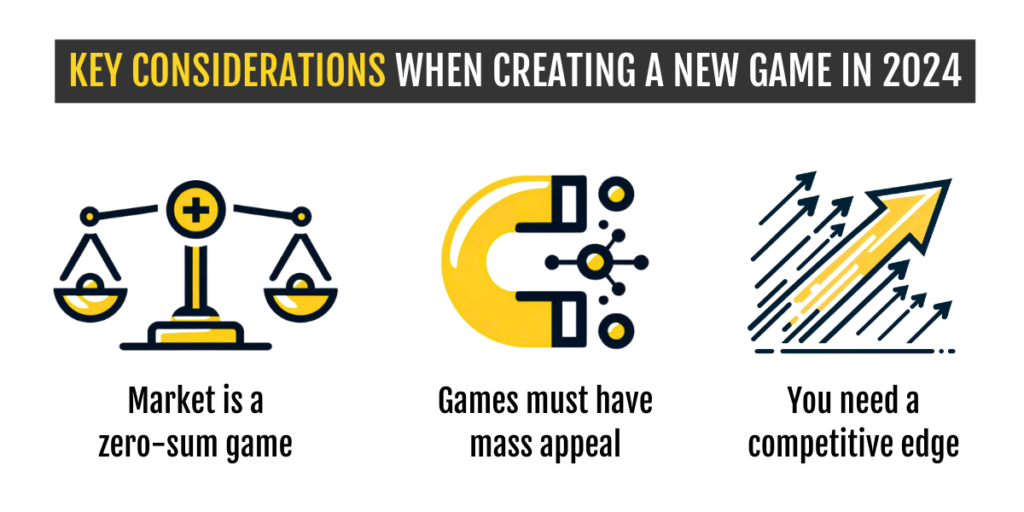
Back in London, I was a strong advocate for the “audience-first” approach. Many publishers can develop a cool prototype and only then consider the audience, game positioning, and theme. However, for most companies, it makes more sense to set aside Unity (pun intended) and start with market research.
Great game design is not enough to build a sustainable studio. The critical question in 2024 is, “Are there enough people willing to pay for it?”
The answer should be a combination of:
A. Market size
B. Expected ARPU and CPI
C. How you will differentiate yourself
Only once you know there’s a specific audience that is big enough, financially accessible, and interested in the intended product you are about to create, should you proceed developing a new mobile game?
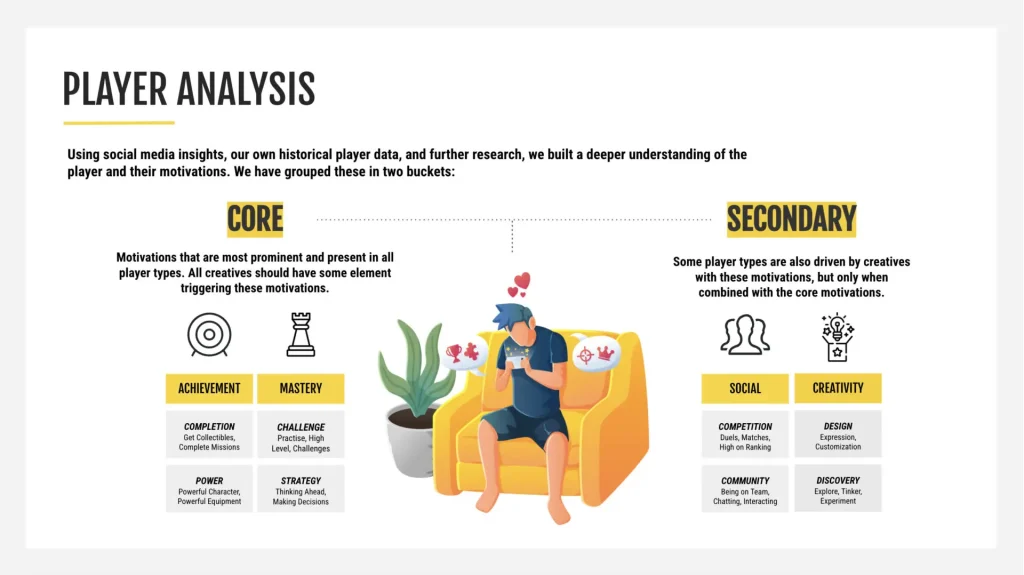
How Top Gaming Studios Come Up With New Titles
Now that we’ve outlined two potential approaches, let me share which path top gaming publishers I spoke with usually take.
Leveraging Team Strengths and Expertise
Paula Neves, whose resume includes Gazeus Games, Square Enix, and now Zynga, shares here insights:
“Do what you do best. Assess your team first; identify your strong skills, expertise, and the genres you know well. That already significantly narrows the horizon and increases your chances of success.”
When developing a new mobile game, the game concept should focus heavily on what sets your game apart and what makes it special. Lay your cards on the table. Don’t rely on marketers to come up with compelling messaging to sell your “me too” product to millions.
Even if they catch the eyeballs, no marketing trick will keep people coming back unless there’s something unique about the experience.
The Power of Audience Segmentation
A great example of this audience-first approach is Space Ape Games. This British studio, backed by Supercell, built and discontinued 24 games between 2017 and 2020, as CEO Simon Hade revealed at Pocketgamer Helsinki.
Beatstar, the breakthrough success following several gloomy years, reversed the dire situation when demographic segmentation revealed significantly better retention rates among female players aged 25-34 years.
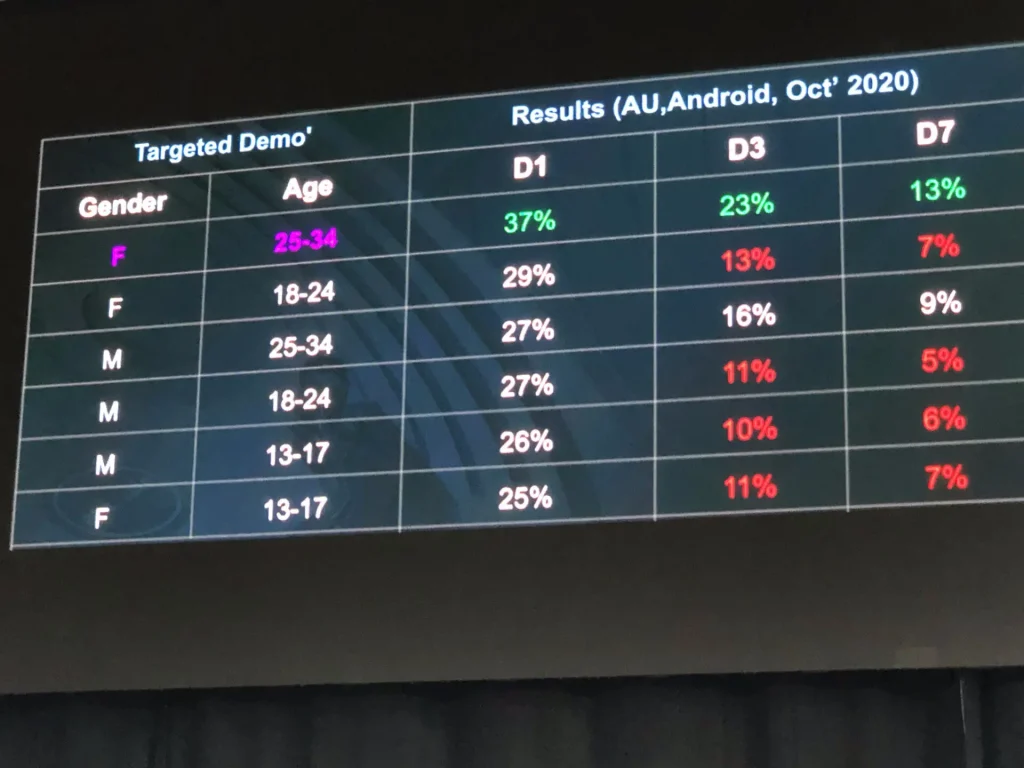
This was one of the key “aha” moments that came from the simple act of asking segmentation questions during the onboarding process. The product was then steered towards this segment. It became a global hit, and recently expanded with a spin-off, Country Star, targeting an even more niche audience.
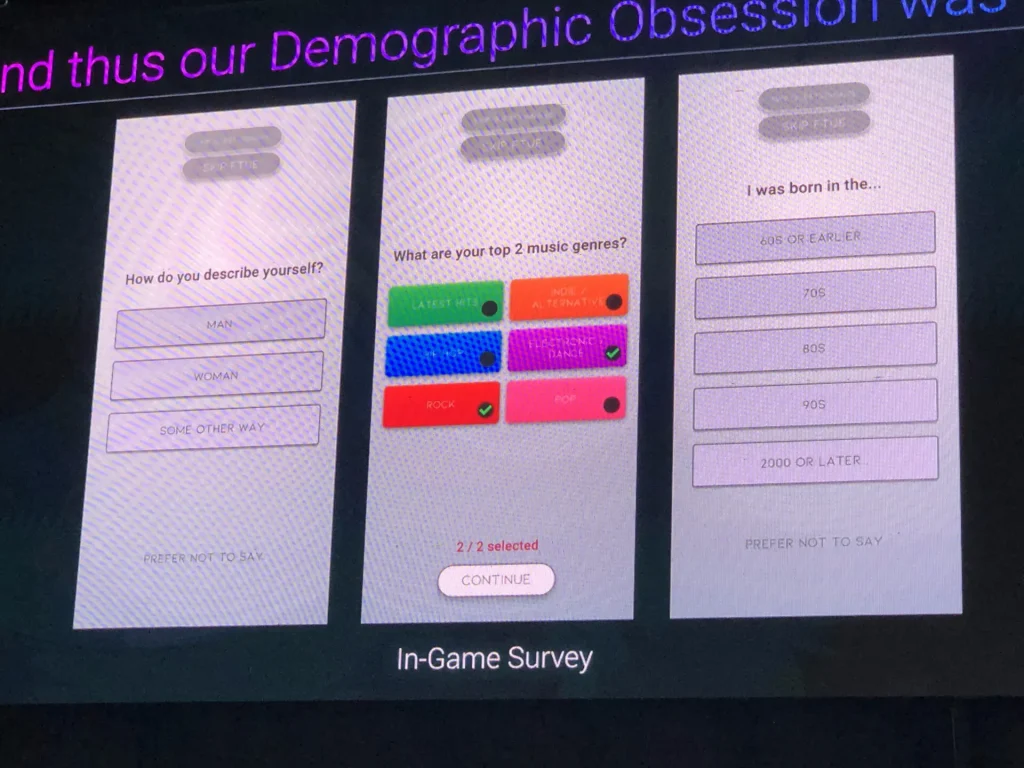
This audience-first approach was used again with Chrome Valley Customs. It was based on the insight that many male players over 50 years old play Candy Crush Saga. (just look around the train on your commute to work).
The audience defined the theme, which was then applied to familiar game mechanics, with the addition of collectible cars as a slight innovation within the genre.
“Strategy is about solving a problem with what you have.”
Eve Chang, ex-producer of Temple Run and Bejeweled Blitz
Balancing Innovation and Familiarity
History has shown that excessive novelty can deter players who seek familiarity. Good examples of innovation within boundaries include Monopoly Go, which drew inspiration from Coin Master, and Marvel Snap, which was influenced by Hearthstone and Magic: The Gathering.
Another notable reference is from Laura Taranto, who discussed this on the Two & Half Gamers podcast. She explained how Travel Town and Gossip Harbour tackled player frustrations. These issues were previously identified in Merge Mansion and Love & Pies, such as hitting progression walls. Addressing these issues led these games to outperform the originals in revenue.
The Shift Toward Casual Gaming
Let’s get back to the Brits, though. On the one hand, it was a risky move for Space Ape to venture into the match-3 genre, which was new territory for them (interestingly, no store screenshot of Chrome Valley Customs shows the matching mechanic).
On the other hand, targeting such a large and previously unaddressed segment with a casual game built around a strong theme makes it a perfect choice in the post-IDFA era.
Paula Neves explains why this is:
“In two years, we will see only casual games [due to targeting issues]. Everything is going towards the middle. Hypercasual goes towards hybrid casual while mid-core is getting more casual.”
She continues on the importance of simple appeal: “Look at Archero ads. At first appearance, it looks hypercasual and therefore accessible. The game has gear, heroes, lots of depth… and by the time you realize it’s fairly complex, you are already hooked and ready to pay.”

The Future of Game Marketability
With the above mentioned, it’s not surprising that at AppAgent, we’ve conducted many marketability tests over the past 12 months for both new and established games. Our goal was to identify the most compelling positioning, art style, and messaging for the right audiences.
The market situation is set to continue on this trajectory due to Google’s Privacy Sandbox. The changes to IDFA are teaching us to move away from overly relying on performance marketing for user acquisition and to focus instead on creating games worth playing and marketing worth remembering.
Coming from the traditional advertising business and building a team with a strong background in marketing communication, I believe that huge opportunities lie in adopting a more mature and holistic marketing approach.
Key Takeaways From Part One
- The audience-first approach is essential in today’s overcrowded market.
- Assessing your team’s skills and genre expertise helps narrow down which game to develop.
- Simple game appeal is crucial due to poor ad targeting.
We’re now applying the above-mentioned principles in our first publishing project, a mobile fitness game called Walking Planet.
The second part of this series will focus on how to find game-market fit early and why achieving “unfair” cost efficiency in user acquisition is crucial. It will also feature insights from game designer Matthew Emery, Ritva Eskelinen of Lightheart Entertainment, and other mobile growth experts.
